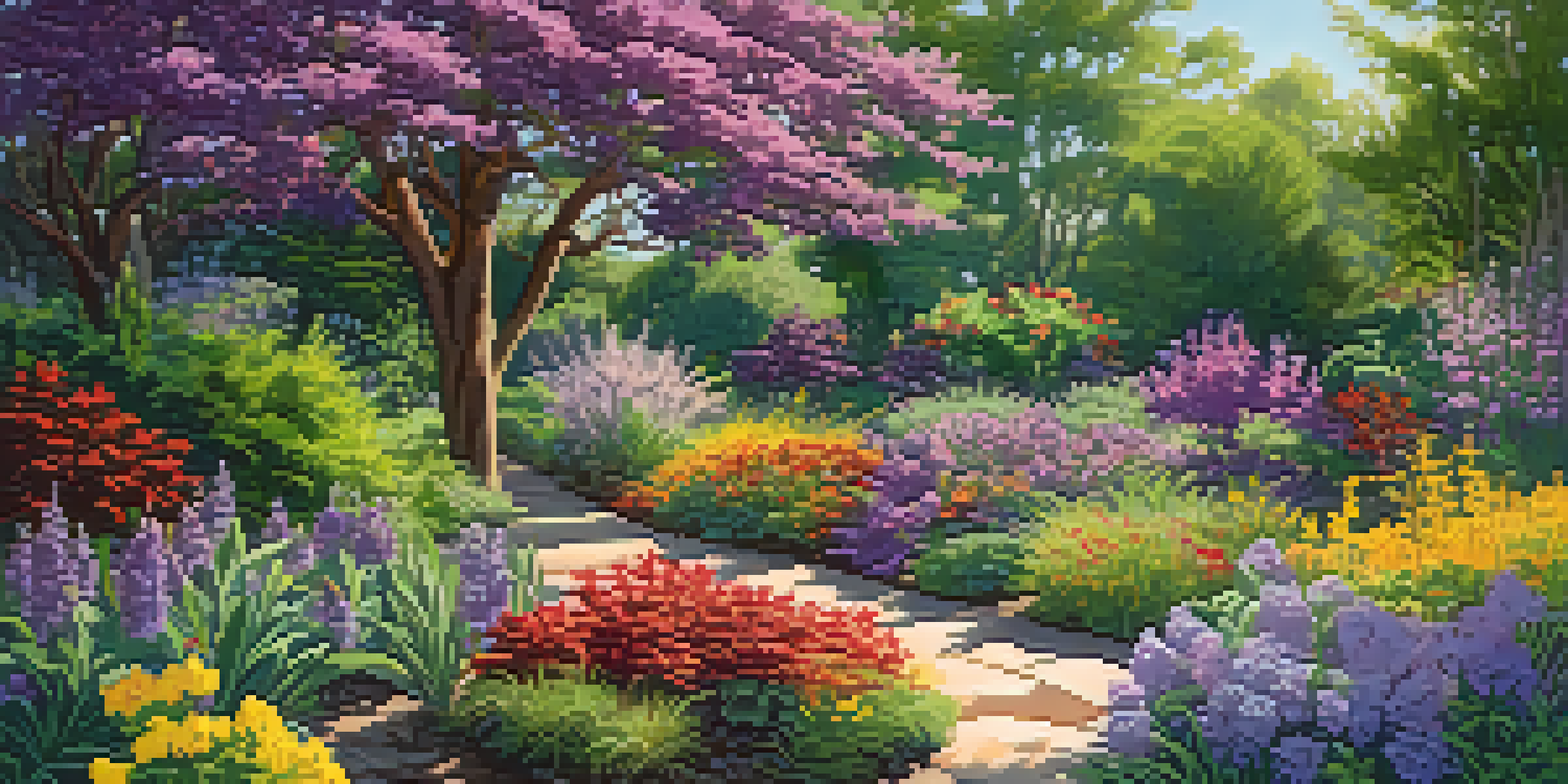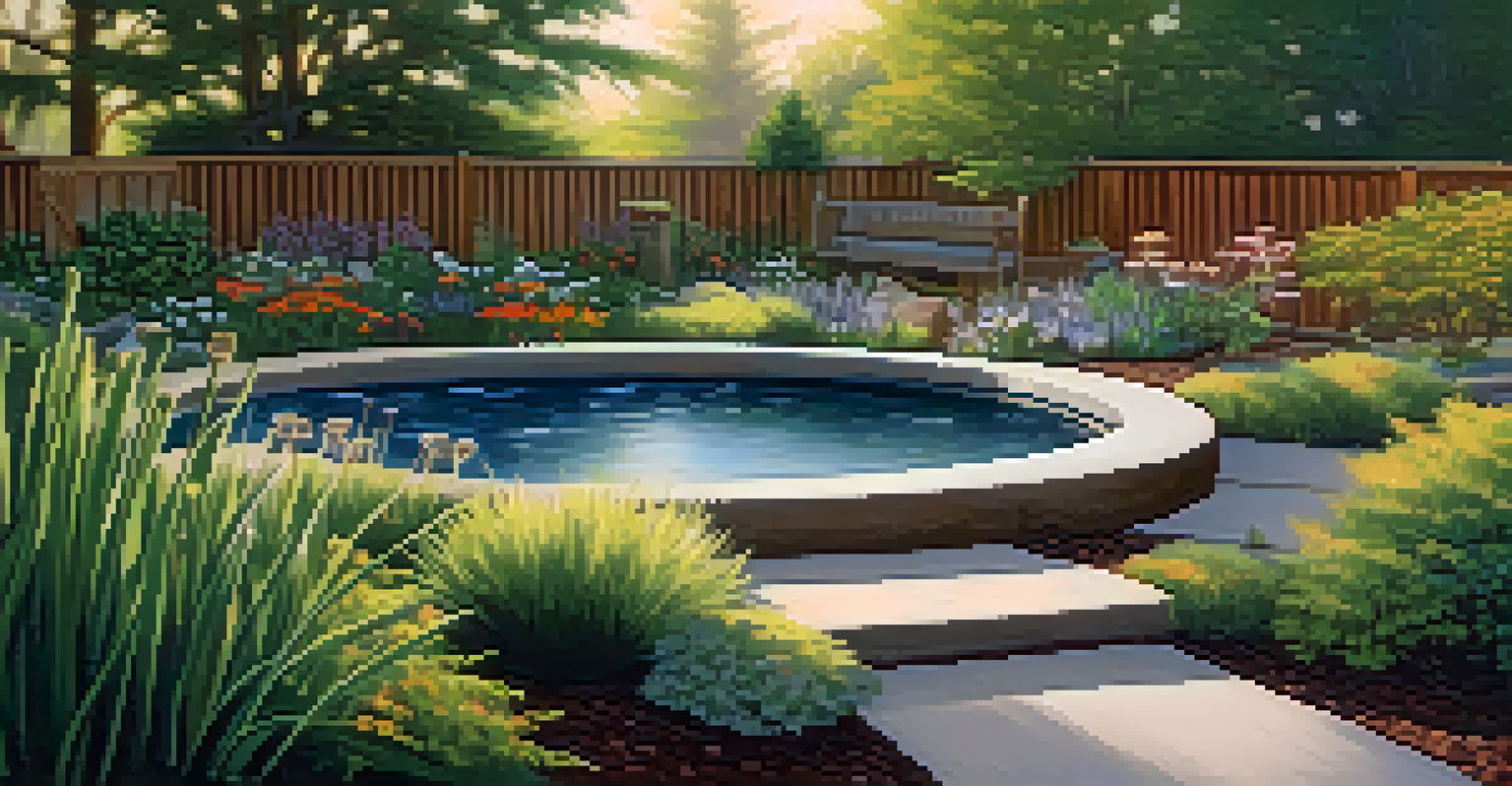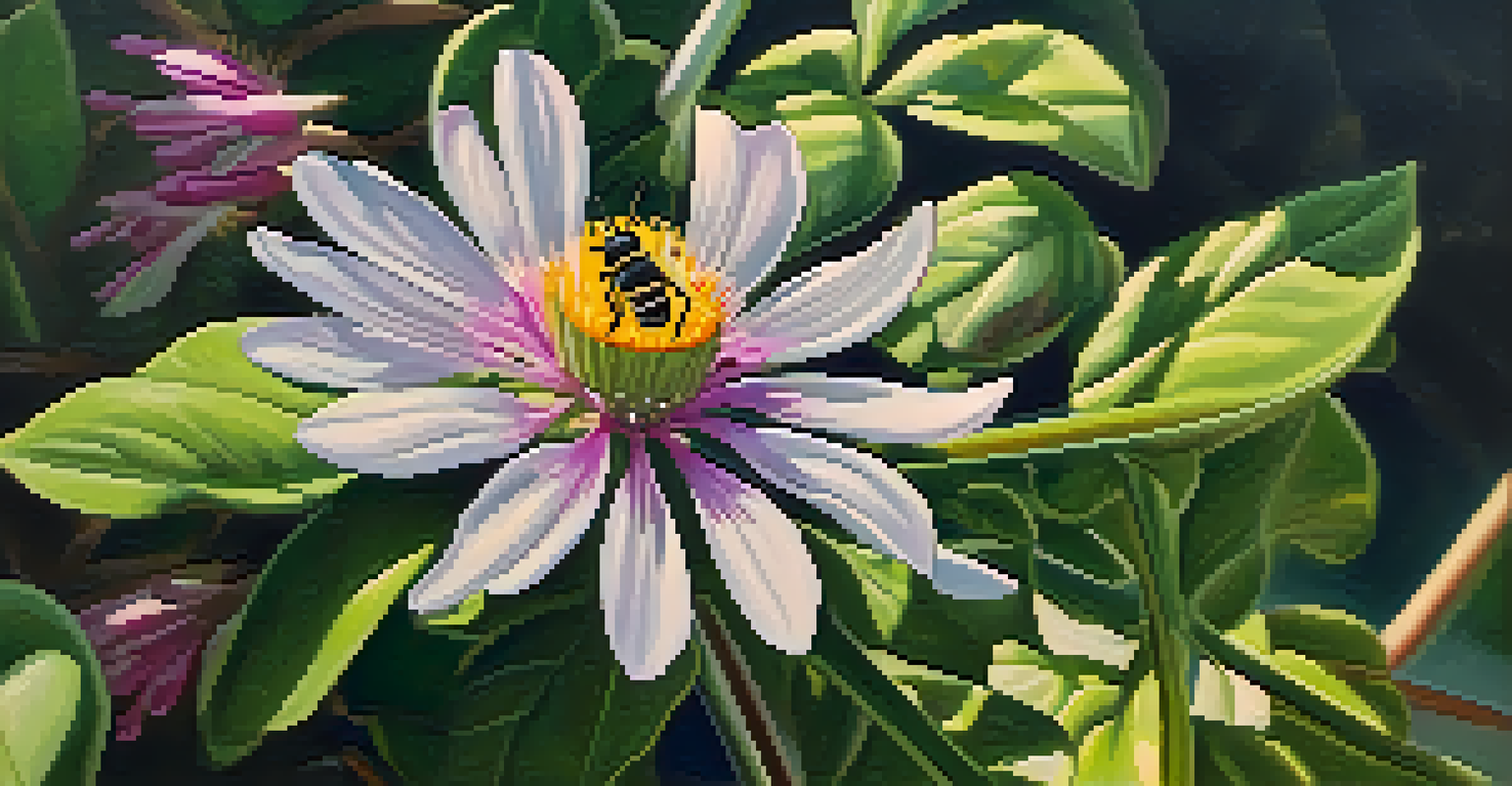Creating Wildlife Habitats with Native Plant Landscapes

Understanding the Importance of Native Plants
Native plants are those that naturally occur in a specific region, thriving in local conditions. They play a crucial role in supporting local wildlife, providing food and shelter for various species. By using native plants in your landscape, you create an environment that fosters biodiversity, which is essential for a balanced ecosystem.
The greatest threat to our planet is the belief that someone else will save it.
Unlike non-native species, native plants have evolved alongside local wildlife, making them more suitable for attracting birds, insects, and other creatures. This mutual relationship helps maintain healthy populations of native fauna, which can be beneficial for natural pest control and pollination. In short, native plants are like the local cuisine for wildlife, offering familiar and nutritious options.
Moreover, native plants require less maintenance and are more resilient to local climate conditions. They are adapted to the soil, moisture, and weather patterns of the area, which means they often need less water and fewer fertilizers. By choosing native plants, you not only support wildlife but also conserve water and reduce your gardening efforts.
Choosing the Right Native Plants for Your Area
Selecting the right native plants for your landscape is essential to create a thriving habitat. Start by researching which plants are native to your region, as different areas have different species that flourish. Local extension services, native plant nurseries, and gardening clubs can provide valuable resources and recommendations.

Consider the specific conditions of your garden, such as soil type, sunlight, and moisture levels. For example, if you have a sunny area with dry soil, you might opt for drought-resistant species like lavender or yarrow. Conversely, a shady spot might benefit from ferns or wild ginger. Tailoring your plant choices to your garden's conditions will increase their chances of survival and success.
Native Plants Support Biodiversity
Using native plants in your landscape fosters biodiversity by providing food and shelter for local wildlife.
Additionally, think about the variety of plants you want to include. A diverse landscape not only attracts a wider array of wildlife but also promotes a healthier ecosystem. Incorporating a mix of flowering plants, shrubs, and trees will provide food and shelter for different species, enhancing your wildlife habitat's overall effectiveness.
Designing Your Native Plant Landscape
Now that you've chosen your native plants, it's time to design your landscape. Start by sketching a simple layout that includes different plant types, taking into account their growth habits and spacing requirements. This can help you visualize how your garden will look as the plants mature and fill in over time.
Nature does not hurry, yet everything is accomplished.
Think about creating layers in your landscape. Taller plants should be positioned at the back or center, while shorter ones should be placed at the front. This layering not only creates visual interest but also provides various habitats for wildlife that prefer different levels of coverage and shelter.
Incorporating features like water sources, rock piles, or brush piles can further enhance your landscape's appeal to wildlife. These elements provide essential resources for many species, such as places to drink, breed, or hide from predators. By adding these features, you transform your garden into a thriving wildlife sanctuary.
Creating a Year-Round Habitat
To create a wildlife habitat that supports species year-round, consider plants that bloom in different seasons. This ensures that food sources are available for pollinators and other wildlife throughout the year. For instance, early bloomers like crocus and late bloomers like asters can extend the growing season for local pollinators.
In addition to flowering plants, including evergreens can provide shelter during the winter months. Many birds use conifers for cover and nesting, while other wildlife may seek refuge in their branches. By thoughtfully planning for all seasons, you can create a habitat that remains vibrant and supportive all year long.
Choose Plants for Local Conditions
Selecting the right native plants based on your garden's specific conditions increases their chances of survival and supports local ecosystems.
Don't forget about the importance of seed and fruit production. Many birds and small mammals rely on seeds and fruits as a food source, especially in colder months when other resources may be scarce. Choosing a variety of plants that produce seeds and fruits at different times throughout the year can help ensure a consistent food supply for wildlife.
Maintaining Your Native Plant Landscape
Once your native plant landscape is established, regular maintenance is key to its longevity and health. This includes tasks like weeding, pruning, and monitoring for pests. However, it's important to remember that native plants often require less maintenance than non-native species, allowing you to enjoy your garden without being overwhelmed.
Consider implementing sustainable practices, such as mulching to retain moisture and suppress weeds. Additionally, avoid using chemical fertilizers or pesticides, as these can harm beneficial insects and disrupt the delicate balance of your ecosystem. By adopting eco-friendly maintenance practices, you not only care for your plants but also promote a healthier environment.
As seasons change, observe how your landscape evolves and make adjustments as needed. This might mean adding new plants, removing those that aren’t thriving, or simply learning more about the wildlife that visits your garden. Engaging with your landscape will enhance your connection to nature and deepen your appreciation for the wildlife it supports.
Encouraging Wildlife to Visit Your Garden
Creating a welcoming environment for wildlife goes beyond just planting native species. You can enhance your garden's appeal by adding features like bird feeders, baths, and nesting boxes. These elements serve as additional resources, attracting a variety of birds, insects, and small mammals to your space.
Consider also the importance of keeping your garden free of chemical pollutants. Wildlife is more likely to visit a garden that is safe and healthy. By minimizing or eliminating the use of chemicals, you create a sanctuary where animals can thrive without fear of harmful substances.
Maintain a Thriving Wildlife Habitat
Regular maintenance and sustainable practices are essential for the health and longevity of your native plant landscape.
Lastly, be patient and observe. It may take time for wildlife to discover your garden, but with the right elements in place, they will eventually come. By enjoying the process and sharing your experiences with others, you can inspire more people to create their own wildlife-friendly landscapes.
The Long-Term Benefits of Native Plant Landscapes
Investing time and effort into creating a native plant landscape yields long-term benefits for both wildlife and your local ecosystem. These landscapes help improve air and water quality, prevent soil erosion, and provide essential habitats for countless species. As such, your garden becomes a vital part of the larger ecological community.
Additionally, native plant landscapes can enhance your property value. Many homebuyers appreciate eco-friendly features, and a well-maintained native garden can set your home apart in the market. It’s not just an investment in wildlife; it’s an investment in the future of your property.

Ultimately, by choosing to create a native plant landscape, you contribute to the preservation of your local environment. You become a steward of nature, helping to maintain the delicate balance of local ecosystems while enjoying the beauty and benefits of a thriving wildlife habitat in your own backyard.